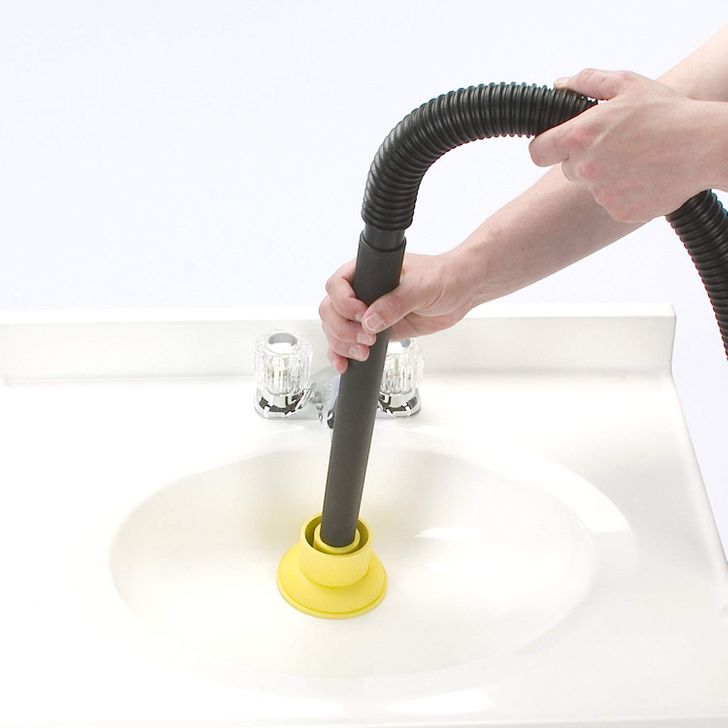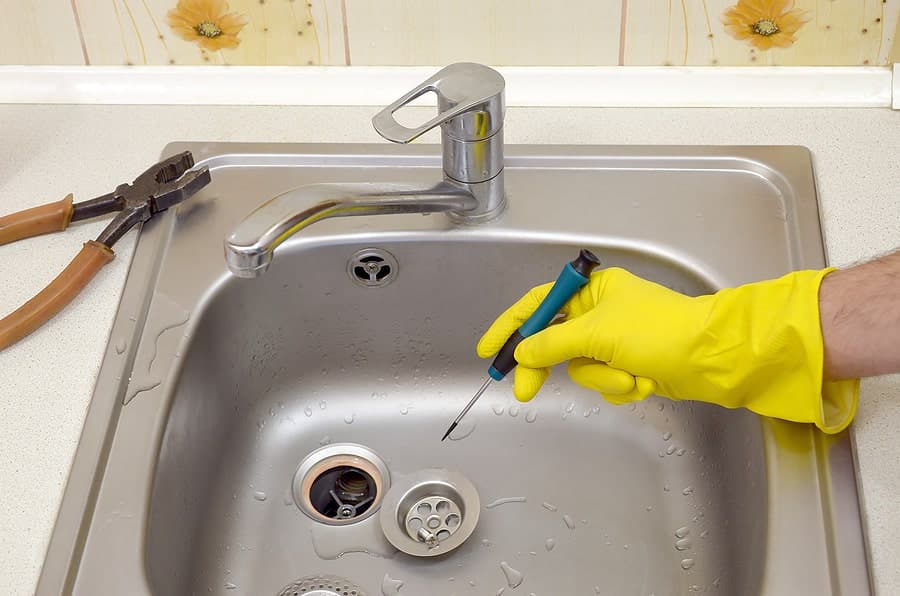This post which follows in relation to DIY Plumbing Fixes is highly interesting. Check it out for yourself and figure out what you think about it.

Obstructed kitchen sinks are among one of the most usual drainage problems house owners encounter. And also what's even more, it's a undesirable and also very unpleasant view. Picture going to the sink to do your meals and also finding out that the drain is blocked and also water can not move down easily.
Most clogged up drains are brought on by food debris, fat, soap, and also oil bits. They obstruct the sink and make it hard for water to drop the drainpipe promptly. While it is tempting to put a call through to the plumbings, there are a few DIY hacks you might try initially prior to making that telephone call.
In this article, we will certainly be looking at five easy steps you might take to free your kitchen area sink from clogs and save you from the discomfort and embarrassment of handling a blocked kitchen area sink.
1. Use Boiling Water
When faced with a blocked sink, the first thing you ought to try is to pour boiling water down the drain. That is about the most uncomplicated treatment to stopped up sinks as well as drains. Boiling water assists neutralize the particles and debris creating the clog, specifically if it's soap, oil, or grease fragments, and also in a lot of cases, it can flush it all down, and also your sink will certainly be back to typical.
Since warm water can thaw the lines as well as cause more damages, do not attempt this method if you have plastic pipelines (PVC). If you make use of plastic pipelines, you may want to adhere to utilizing a plunger to get debris out.
Using this approach, switch on the faucet to see how water moves after pouring hot water away. Attempt the process once more if the obstruction persists. The obstruction could be much more relentless in some situations and also require even more than just boiling water.
2. Possibly it's the Garbage Disposal
In numerous instances, the blockage might be due to a clog in the disposal. Usage pliers rather.
If this does not function, you can explore the following option to unclog your kitchen area sink.
3. Attempt a Plunger
You can attempt using a plunger if the issue is not from the garbage disposal. Plungers are common home tools for this event, as well as they can can be found in handy if you use them appropriately. A flat-bottomed bettor is most ideal for this, but you can make do with what you have is a bathroom bettor.
Follow the following easy steps to use the plunger successfully:
• Secure the drainpipe with a rag as well as load the sink with some hot water
• Place the plunger in position over the drainpipe and also begin plunging
• Check to see if the water runs openly after a couple of plunges
• Repeat the process up until the water drainage is free
4. Baking Soda and Vinegar
Instead of utilizing any kind of kind of chemicals or bleach, this method is safer as well as not dangerous to you or your sink. Sodium bicarbonate and vinegar are everyday house products made use of for several other things, as well as they can do the technique to your kitchen sink.
• Firstly, remove any water that is left in the sink with a cup.
• Then pour a good amount of baking soda down the drain.
• Pour in one cup of vinegar.
• Seal the drainage opening and allow it to settle for some mins.
• Pour warm water away to dissolve various other persistent deposit and also fragments.
Following this straightforward method could do the trick, and you can have your kitchen sink back. Repeat the process as much as you deem necessary to rid the sink of this particles entirely.
5. Make use of a Hanger
Utilizing a wire fabric hanger or a plumber's serpent if you have one can do the method. All you need do is straighten the hanger to go down the drainpipe while you thoroughly select out the particles creating the blockage.
Run warm water away after this to see just how successful you were.
Final Words
Attempting these few methods can save you the expenses of having a plumber examine it. However oftentimes, a plumber is what we require. In cases where you Visit The Following Page find it difficult to unblock the sink also after trying all these techniques, it may be time to leave it to the specialists.
Contact specialist plumbing business to repair your drain troubles as well as various other different house plumbing requirements.
Clogged kitchen area sinks are one of the most common drainage problems homeowners deal with. Imagine going to the sink to do your meals and discovering out that the drainpipe is blocked and also water can not flow down conveniently.
They clog the sink as well as make it hard for water to go down the drainpipe rapidly. When encountered with a clogged sink, the very first point you must attempt is to put boiling water down the drainpipe. Boiling water helps neutralize the bits as well as particles creating the clog, especially if it's soap, oil, or oil fragments, and also in many situations, it can purge it all down, and also your sink will certainly be back to normal.
How to Unclog a Kitchen Sink
Take the Plunge
Start your efforts by plunging. Use a plunger with a large rubber bell and a sturdy handle. Before getting to work on the drain, clamp the drain line to the dishwasher. If you don’t close the line, plunging could force dirty water into the dishwasher.
Fill the sink with several inches of water. This ensures a good seal over the drain.
If you have a double sink, plug the other drain with a wet rag or strainer.
Insert the plunger at an angle, making sure water, not air, fills the bell.
Plunge forcefully several times. Pop off the plunger.
Repeat plunging and popping several times until the water drains.Clean the Trap
The P-trap is the curved pipe under the sink. The trap arm is the straight pipe that attaches to the P-trap and runs to the drain stub-out on the wall. Grease and debris can block this section of pipe. Here’s how to unclog a kitchen sink by cleaning out the trap:
Remove as much standing water from the sink as possible.
Place a bucket under the pipe to catch the water as it drains.
Unscrew the slip nuts at both ends of the P-trap. Use slip-joint pliers and work carefully to avoid damaging the pipes or fasteners.
If you find a clog, remove it. Reassemble the trap.
If the P-trap isn’t clogged, remove the trap arm and look for clogs there. Run the tip of a screwdriver into the drain stub-out to fetch nearby gunk.Spin the Auger
With the trap disassembled, you’re ready to crank the auger down the drain line.
Pull a 12-inch length of cable from the auger and tighten the setscrew.
Insert the auger into the drain line, easing it into the pipe.
Feed the cable into the line until you feel an obstruction. Pull out more cable if you need to.
If you come to a clog, crank and push the cable until you feel it break through. The cable will lose tension when this happens.
Crank counterclockwise to pull out the cable, catching the grime and debris with a rag as the cable retracts.

Do you appreciate reading up on DIY Plumbing Fixes? Post feedback further down. We would be glad to see your thinking about this post. In hopes that you come back again before long. Please set aside a second to share this entry if you enjoyed reading it. I appreciate reading our article about DIY Plumbing Fixes.